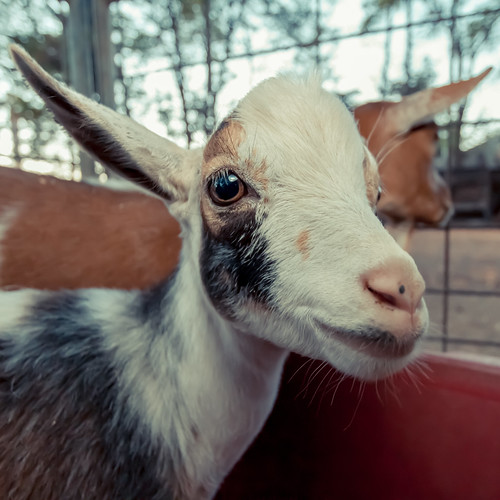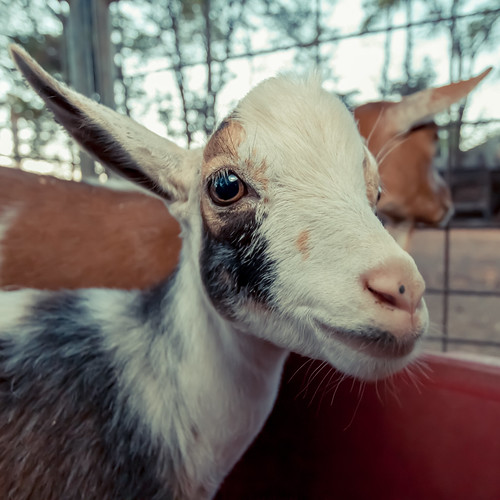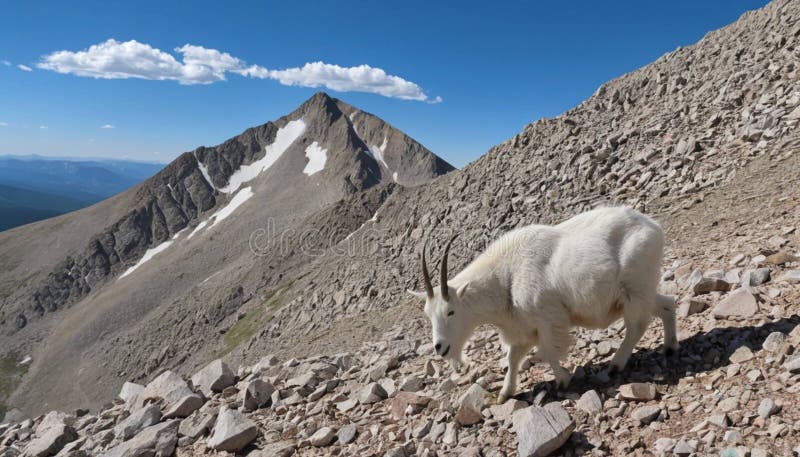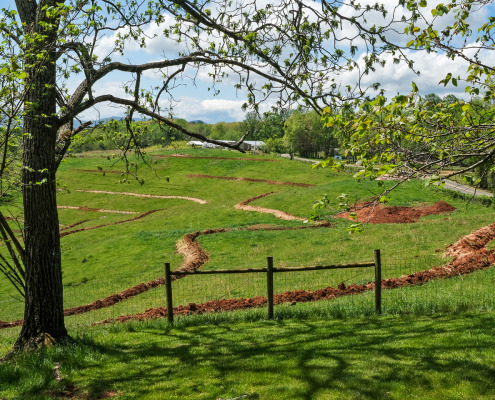
Appalachian Goatscaping: Silvopasture for a Healthier Homestead

A picturesque Appalachian hillside where Kiko goats graze peacefully among black locust trees, exemplifying the beauty and practicality of silvopasture.
Silvopasture, a regenerative farming practice that integrates trees, forage, and livestock, offers a multitude of benefits for both the land and the animals. It's a system as old as agriculture itself, with echoes found throughout history, including early agricultural practices in the Appalachian region. In Appalachia, settlers often grazed livestock in wooded areas, unknowingly laying the groundwork for what we now call silvopasture. Today, as homesteaders seek sustainable and resilient food systems, silvopasture is experiencing a resurgence. But what if we added a particularly well-suited animal to the mix? Enter the goat. These agile, hardy creatures are uniquely positioned to thrive in Appalachian silvopasture systems, turning challenging terrain into productive pasture. Let's explore why goats and silvopasture are a perfect Appalachian match.
Why Goats and Silvopasture are a Perfect Appalachian Match
Goats are browsers, meaning they prefer to eat leaves, twigs, and shrubs rather than grass. This makes them ideal for managing brush and invasive species that often plague Appalachian forests and pastures. Plants like multiflora rose, kudzu, and honeysuckle can quickly take over, choking out desirable forage and reducing biodiversity. Goats, with their selective eating habits, can effectively control these invaders, opening up the land for more beneficial plants.
But the benefits don't stop there. As goats graze, they deposit manure, which is rich in nutrients and helps to improve soil health. This natural fertilization reduces the need for synthetic fertilizers, leading to a more sustainable and environmentally friendly homestead. Moreover, goat manure is distributed more evenly than that of larger livestock, further enhancing its effectiveness.
Appalachian homesteaders can also benefit directly from the goats themselves, harvesting meat, milk, or fiber, depending on the breed and their homestead goals.
The Appalachian region presents unique challenges for any farming endeavor. Steep terrain, rocky soils, and variable weather conditions can make it difficult to establish and maintain traditional pastures. However, goats are well-suited to these conditions. Their agility allows them to navigate steep slopes with ease, and their hardiness enables them to withstand the region's fluctuating temperatures.
To successfully integrate goats into an Appalachian silvopasture system, careful planning is essential. This includes selecting appropriate goat breeds, implementing rotational grazing strategies, and ensuring adequate predator control.
Some breeds are especially well suited for the Appalachian climate and terrain. Kiko goats are known for their hardiness, parasite resistance, and excellent mothering abilities. Spanish goats are another good option, prized for their browsing ability and adaptability.

A Kiko goat happily browsing on multiflora rose in an Appalachian woodland, demonstrating their effectiveness at controlling invasive species.
Setting Up Your Appalachian Silvopasture System (A Practical Guide)
Creating a silvopasture system in Appalachia requires careful planning and execution. Here's a step-by-step guide to get you started:
1. Planning and Design:
- Tree Selection: Choose tree species that provide both forage for goats and economic value for the homesteader. Black locust is a nitrogen-fixing tree that provides excellent browse and can be used for firewood or fence posts. Pawpaw trees offer delicious fruit and provide shade. Fruit trees like apple, pear, and peach can also be incorporated, but they will require protection from the goats when young.
- Spacing: Consider the mature size of the trees when determining spacing. Adequate spacing is crucial for allowing sunlight to reach the forage and for allowing goats to move freely. A spacing of 30-50 feet between trees is generally recommended.
- Topography: Map out the terrain on your property and plan your silvopasture system accordingly. Utilize natural features like slopes and water sources to your advantage. Ensure that goats have access to water at all times.
2. Fencing:
Goat-proof fencing is essential for protecting your trees and containing your goats. Woven wire fencing is a good option, especially when reinforced with electric strands.
- Woven Wire: Use a minimum of 4-foot high woven wire with small enough openings to prevent goats from squeezing through.
- Electric Strands: Add one or two strands of electric fence along the top and bottom of the woven wire to deter goats from climbing or pushing on the fence.
- Appalachian Terrain Considerations: Account for uneven ground and slopes when installing fencing. Use sturdy posts and ensure that the fence follows the contours of the land to prevent gaps. Brace corners and ends of the fence with H-braces or diagonal bracing.
3. Goat Management:
- Breed Selection: As mentioned earlier, Kiko and Spanish goats are well-suited for Appalachian silvopasture.
- Rotational Grazing: Divide your silvopasture into paddocks and rotate your goats between them. This allows forage to regrow and reduces the risk of overgrazing. It also helps to control parasites by breaking the parasite lifecycle.
- Health Considerations: Regularly monitor your goats for signs of illness or parasites. Consult with a veterinarian to develop a preventative health plan.
- Predator Control: Protect your goats from predators such as coyotes, foxes, and dogs. Livestock guardian dogs (LGDs) are an excellent way to deter predators. Fencing and secure nighttime housing are also important.
4. Long-Term Maintenance:
- Tree Pruning: Regularly prune your trees to maintain their health and shape. Pruning also encourages the growth of new shoots, which provide additional forage for goats.
- Weed Management: Control weeds that compete with forage plants. Goats can help with weed control, but you may also need to use manual or chemical methods.
- Soil Health Monitoring: Regularly test your soil to monitor nutrient levels. Amend the soil as needed with compost, manure, or other organic fertilizers.

An Appalachian homesteader demonstrates how to construct woven wire fencing around a young fruit tree to protect it from goats in a silvopasture system.
Appalachian Resources and Support
Fortunately, there are many resources available to support silvopasture and goat farming in Appalachia. Here are a few:
- Local Extension Services: Contact your local county extension office for information on soil testing, forage management, and goat health.
- Appalachian Sustainable Development (ASD): ASD promotes sustainable agriculture and community development in the Appalachian region. (hypothetical website)
- The Kerr Center for Sustainable Agriculture: The Kerr Center offers resources on silvopasture and other sustainable farming practices. (hypothetical website)
- Online Forums and Communities: Connect with other Appalachian homesteaders and goat farmers through online forums and communities.
Call to Action: Learn More at the Asheville Silvopasture Workshop
Want to dive deeper into Appalachian goatscaping? Join us for our upcoming workshop:
Appalachian Silvopasture for Beginners: A Goat-Centric Approach
- Date: Saturday, October 26th, 2024
- Location: The Mountain Heritage Center, Asheville, NC
- Speakers: Dr. Arlo Guthrie (expert in goat nutrition) and Ms. Willow Creek (Appalachian homesteader specializing in silvopasture).
- Registration: Visit www.appalachiansilvopasture.org to register. Space is limited.
Attendees will learn practical techniques for establishing and managing a successful silvopasture system with goats, including breed selection, fencing strategies, rotational grazing, and predator control.
Conclusion
Silvopasture with goats offers a promising path towards a more resilient and sustainable food system for Appalachian homesteaders. By integrating trees, forage, and goats, you can improve soil health, control invasive species, and produce valuable products for your family and community. Embrace the power of Appalachian goatscaping and create a healthier, more productive homestead for generations to come.